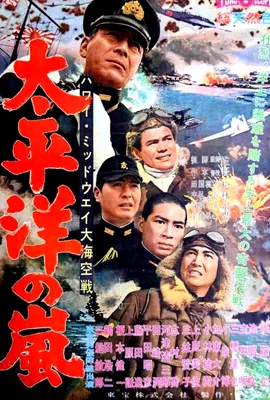Inoue Yasuyuki
Overview
Born the 5th of 8 brothers in Fukuoka. He was drafted into the navy in 1944 but lost his left foot after being struck by enemy aircraft fire later that year. He was released from the hospital in 1945 after the war's end, and despite his disability, he studied relentlessly to pass the entrance exam for Nihon University College of Art, where he studied drafting.
He found work on the Toho lot designing set pieces, particularly detailed miniatures of navy ships for war films. His skill led to a rapid rise in the studio hierarchy, and he became the head Special Effects Art Director under Tsuburaya Eiji in the 1960s. He was responsible for the design of several unique kaiju, including Kamacuras, Kumonga, Ebirah, and Hedorah, as well as the sleek Super-X flying tank from The Return of Godzilla (1984).
During the production of Storm Over the Pacific (1960), Inoue conceived of the legendary "Great Pool" (or "Big Pool") to accommodate a 1/50th scale set of Pearl Harbor. Working with director Matsubayashi Shûe, they scaled the set down further to 1/66th to fit the space. This massive water tank became a staple of kaiju eiga for decades, hosting countless water battles until it was finally dismantled after Godzilla: Final Wars (2004).
Another famous example of his ingenuity came during Destroy All Monsters (1968), where he dug a hole through the studio floor to allow the large-scale model of the SY-3 rocket to realistically "emerge" from its underground silo on the moon set.
After leaving Toho in 1971, he founded his own company, Alpha Planning, continuing to work on high-profile special effects productions. He was the primary subject of the documentary Bringing Godzilla Down to Size (2008).
Selected Works















